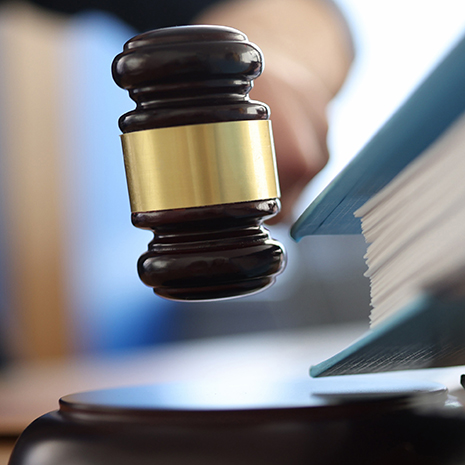Experienced Federal Appeal Attorneys: Skilled Representation for Facility Situations
Wiki Article
Debunking the Refine of Federal Appeals: What You Need to Know
Browsing the intricate realm of federal charms can commonly appear like traversing uncharted waters for those strange with the procedure. Recognizing the nuances of appellate court jurisdiction, the ins and outs of submitting a notice of appeal, presenting a compelling short, and making an influential dental argument are vital components that can significantly impact the outcome of a case. By untangling the layers of complexity surrounding federal appeals, individuals can gain a clearer understanding right into the systems that control this critical point of the legal system.Comprehending Federal Appeals Process
Digging into the intricate world of the federal charms procedure unveils a structured and systematic trip via the judicial system - federal appeals attorneys in south dakota. Federal charms function as a crucial device for examining choices made by reduced courts. Understanding this process is crucial for any person associated with lawful proceedings at the government levelThe procedure generally starts with an event dissatisfied with a lower court's ruling filing a notice of allure. This sets off a review by a greater court, where a panel of courts assesses the lawful disagreements offered by both parties. Briefs detailing the lawful reasoning behind each event's placement are submitted, and dental debates might be heard to clear up intricate issues.
The appellate court's choice is based on a thorough exam of the lower court's process and the debates provided. The courts do not concentrate yet reexamine truths on whether lawful mistakes took place that influenced the reduced court's decision. When the appellate court gets to a choice, it can affirm, reverse, remand, or change the reduced court's judgment, giving clarity and finality to the legal conflict. Comprehending this procedure is crucial for navigating the complexities of government appeals successfully.
Appellate Court Jurisdiction Clarified

Appellate courts have jurisdiction over details kinds of instances, normally those involving legal mistakes, procedural issues, or questions of law instead than factual conflicts. The jurisdiction of appellate courts is normally outlined in laws and laws that regulate the court system. Understanding appellate court jurisdiction is essential for celebrations included in the appeals process as it figures out whether a case is eligible for review and the level to which the appellate court can interfere in the lower court's choice.
Declaring a Notice of Allure
The preliminary action in starting the federal appeals process includes filing a Notice of Allure with the suitable appellate court. federal appeal lawyers indiana. This essential file formally alerts the court and the other events associated with the case that the appealing event intends to look for a review of the reduced court's choice. Submitting a Notification of Appeal is a rigorous procedural requirement that establishes the appellate process in motionWhen preparing the Notification of Allure, it is necessary to ensure conformity with the details guidelines and standards of the appropriate appellate court. The file has to commonly include information such as the situation name, the lower court's name, the date of the judgment being appealed, and a concise declaration showing the grounds for the appeal.
Timeliness is essential when filing a Notification of Appeal. Missing the target date for sending this paper can lead to the appeal being disregarded, underscoring the relevance of punctual and accurate initiation of the appeals process. It is advisable to seek legal advice to navigate the intricacies of filing a Notice of Charm efficiently.
Rundown and Dental Disagreement
In the appellate procedure, offering created briefs and participating in oral arguments play critical duties in advocating for the appealing event's placement before the appellate court. Briefs are thorough legal papers that lay out the events' debates, lawful authorities, and evaluation supporting their positions. These composed entries provide the court with a detailed understanding of the realities of the case, the relevant law, and why the appealing party thinks the reduced court's choice must be overturned.Adhering to the submission and evaluation of the briefs, dental arguments offer the parties a possibility to further clarify their positions, resolve any inquiries the appellate judges may have, and emphasize essential points from their created briefs. Dental debates are a possibility for the attorneys to convince the judges with verbal advocacy and feedbacks to inquiries from the bench.

Getting the Appellate Court Choice

Verdict
Understanding the appellate court jurisdiction, submitting a notice of charm, preparing briefs, and offering oral disagreements are Extra resources all essential components of this procedure. Ultimately, getting the appellate court choice can offer clearness and resolution to legal disagreements.As we proceed from recognizing the government charms procedure to exploring the details of appellate court jurisdiction, an essential facet comes to light regarding the authority and limitations of these greater courts in the lawful landscape. Appellate court territory refers to the range of instances that a particular appellate court has the power to examine and determine upon. Unlike trial courts that listen to instances for the very first time, appellate courts are restricted to reviewing choices made by lower courts. Understanding appellate court territory is critical for events entailed in the allures process as it figures out whether a situation is eligible for evaluation and the degree to which the appellate court can interfere in the lower court's decision.
Whether the appellate court attests, reverses, or remands the lower court's choice, understanding the ramifications of the judgment is crucial for all parties included in the appellate procedure.
Report this wiki page